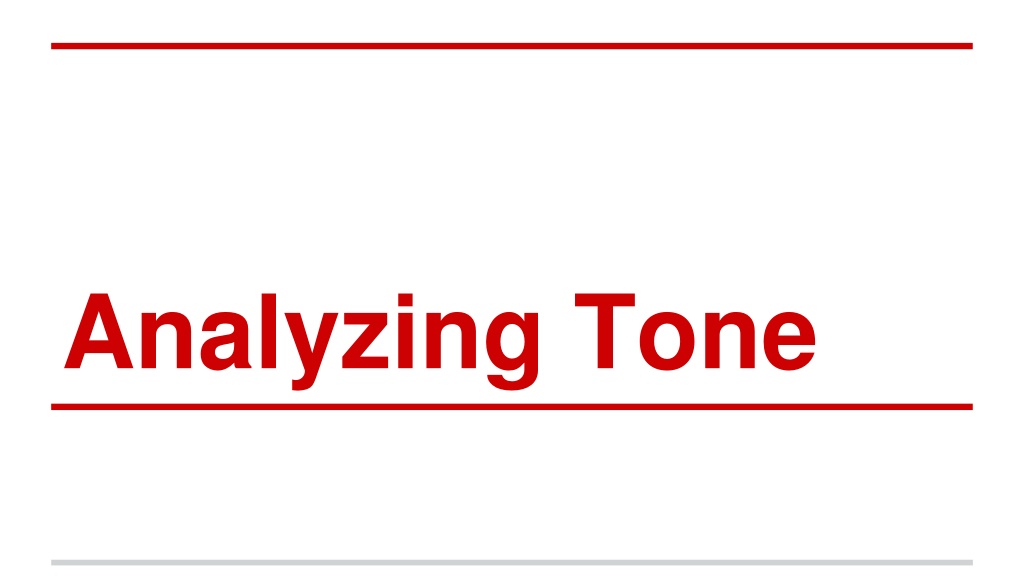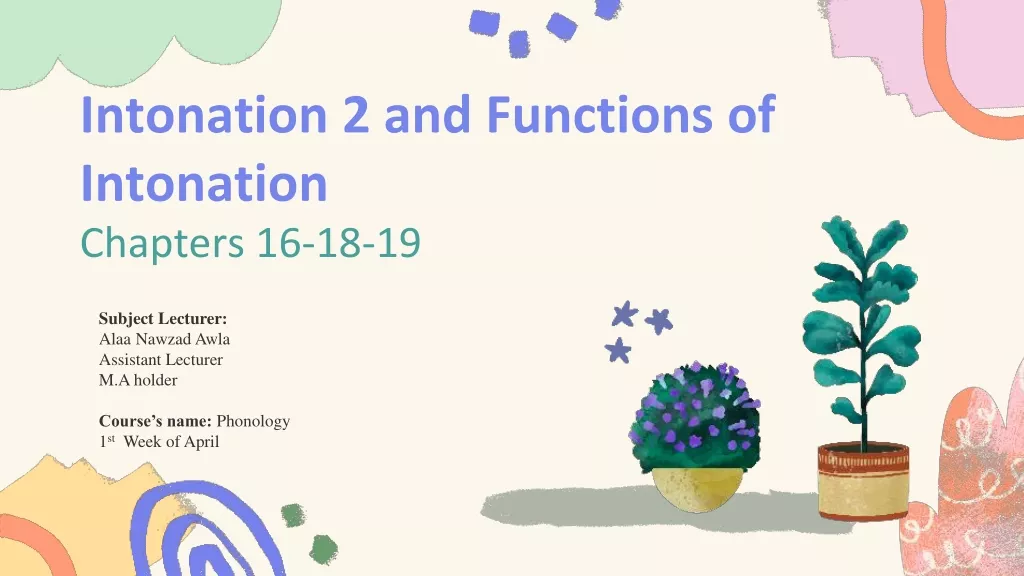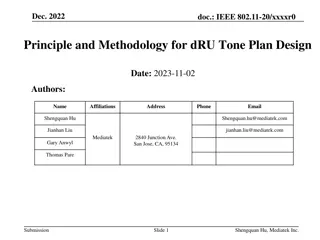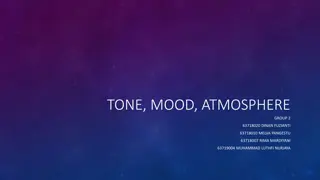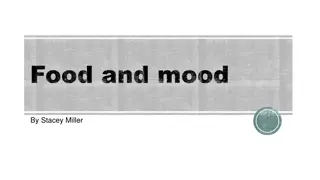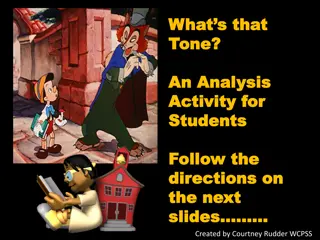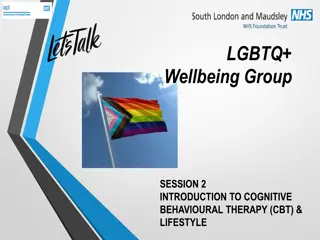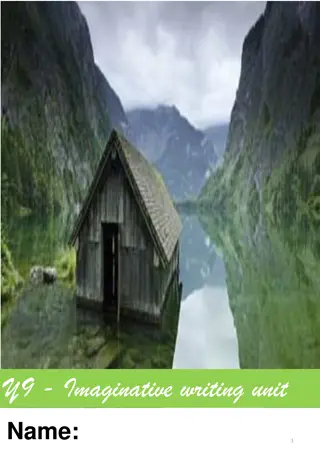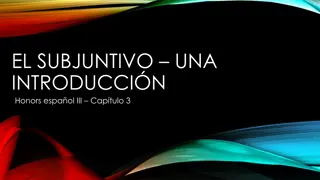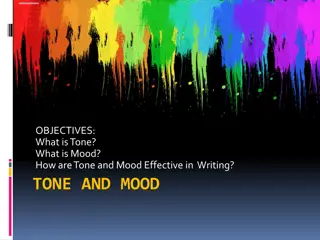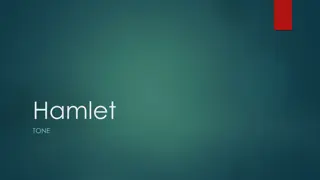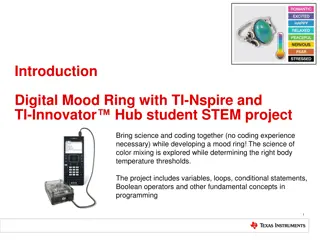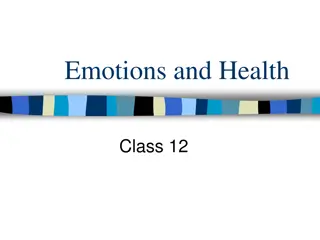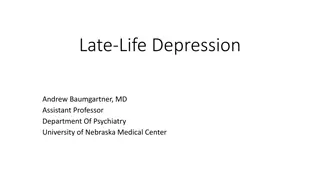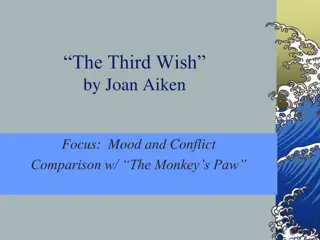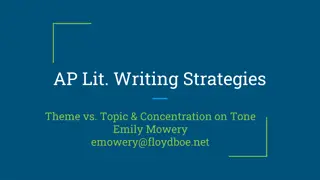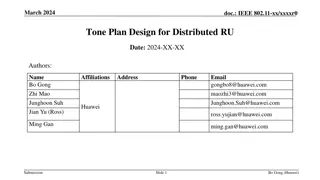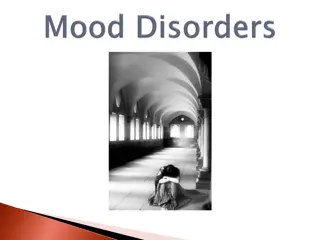Tone and Mood in Literature
Tone refers to the author's attitude towards the subject, while mood is the emotional atmosphere of the text. The difference lies in how the author feels versus how the reader feels. Understanding and analyzing tone involves considering aspects like diction, imagery, figurative language, and syntax. By examining diction closely, one can discern between formal and informal language, abstract and concrete words, and the connotations associated with specific terms. Recognizing and interpreting tone and mood enriches the reader's experience of literary works.
Download Presentation

Please find below an Image/Link to download the presentation.
The content on the website is provided AS IS for your information and personal use only. It may not be sold, licensed, or shared on other websites without obtaining consent from the author.If you encounter any issues during the download, it is possible that the publisher has removed the file from their server.
You are allowed to download the files provided on this website for personal or commercial use, subject to the condition that they are used lawfully. All files are the property of their respective owners.
The content on the website is provided AS IS for your information and personal use only. It may not be sold, licensed, or shared on other websites without obtaining consent from the author.
E N D
Presentation Transcript
What is Tone? Tone, simply defined, is the attitude the author has towards the subject of the work he/she is writing. How does the author feel about the subject of the text?
Mood Mood is the atmosphere of the text; it is the emotions aroused in the reader. What emotions/feelings do you have as the reader?
Tone & Mood: Whats the difference? Whereas the tone deals with what the author thinks about the text, mood deals with how the reader feels.
How do I explain the tone? Positive Negative Humorous/Ironic Amused Bantering Comical Critical Satiric Taunting Mocking Facetious Accusing Aggravated Arrogant Bitter Cold Condescending Disgusted Passive Amiable Authoritative Joyful Lighthearted Romantic Enthusiastic Compassionate
How do I identify and analyze tone? 4 Steps to identify & analyzing tone 1.Diction 2.Imagery 3.Figurative Language 4.Syntax (sentence structure)
1-Diction: What is it? In Speaking = Pronunciation Text = Word Choice
P a t h o L o g E t h o s 1-Diction: How do I analyze it? o s s Formal vs. Informal Abstract vs. Concrete General vs. Specific Long, technical and often unusual Understood by majority of readers Perceived and measured with senses Vague, refer to broad class Precise, refer to a specific Can t be perceived with senses, known through intellect Allow reader have a wide range of imagination Make reader imagine specific thing Tell Show Character perceived as educated Character is relatable to the reader Ex: Pleasant, truth, kind Ex: Yellow, 37 Degrees, Bumpy Ex: Car Ex: Mustang Tendentious Biased
1- Diction: How do I analyze it? Denotation- literal meaning/dictionary definition of the word Connotation- The feeling or idea a word brings to mind along with the denotative meaning Twilight vs. Dusk Dog vs. Pooch
2- Imagery: What is it? Imagery is the use of figurative language meant to appeal to the senses in order to place the reader in a scene or deepen understanding through feeling.
2- Imagery: How do I analyze it? What senses are they appealing to? Figurative Language? The lake was left shivering by the touch of morning wind. The eerie silence was shattered by her scream. He felt like the flowers were waving him a hello. He knew a storm was coming, the smell of moss and moisture told him it would arrive soon. The iron taste in her mouth was an indicator of fresh blood.
3- Figurative Language: What is it? Figurative language is a tool that an author employs to Google Definition: help the reader visualize what is happening in a story or poem. Some common types of figurative language are: Onomatopoeia, Alliteration, Hyperbole, Simile, Personification, Metaphor, Personification, Analogy, Euphemism. Figures of Speech Rhetorical Devices Sounds Metaphor Simile Personification Onomatopoeia Alliteration Pun Hyperbole Allusion Repetition
5-Sentence Structure: What is it? Refers the construction of the sentence (AKA-Syntax). Rather than look at specific words, look at how sentences work together throughout the piece.
5- Sentence Structure: How do I analyze it? Word Order- End of sentence tends to have more emphasis. John bought flowers vs Flowers were bought by John Length- Short are more intense and immediate, especially when amongst longer sentences. No thanks vs. I d rather not; however, thank you for the offer
